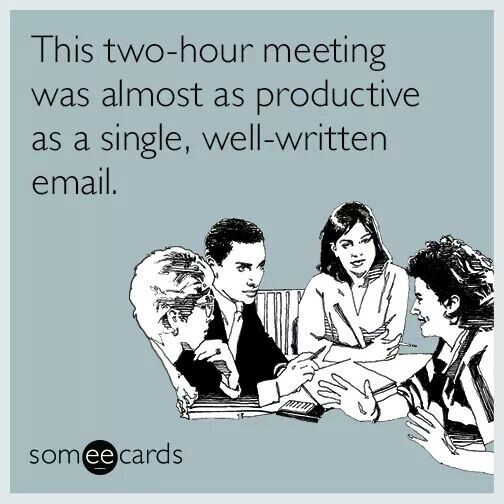We have all been either a victim or a perpetrator of meaningless meetings. You’ve likely asked yourself at one time or another if people have any idea of how to run a meeting.
Jimmy Miller, Director of Training and Development at OutboundEngine, designed a 90-minute seminar devoted specifically to this topic as part of the quarter-long Leadership Development Program (LDP) that helps OutboundEngine employees hone and build career skills. Jimmy says understanding how to run a meeting is an important quality for leaders to have because, “if you can lead an efficient meeting, you can be in charge of anything.”
Part I: Back to Basics
What is a meeting?
A meeting is defined by Merriam-Webster as coming together for a common purpose. It’s a simple enough concept, but for many of us, it seems like meetings have gotten more complicated than that.
Good ideas become great when tested and refined from multiple perspectives. Meetings should foster a creative space where collective minds come together to improve or evolve ideas, resulting in a shared trust and understanding. For example: using abbreviations like “MRR” instead of saying monthly recurring revenue is possible because you have a shared knowledge base.
What is it for?
Meetings help define project direction and reinforce commitment. When parties contribute to a mutual decision, they’re also making a social agreement. Everyone is responsible for their part.
It’s also important that attendees openly share their thoughts. When people don’t buy into decisions, the majority of the time it’s because they weren’t consulted. It’s okay to respectfully disagree and push back when appropriate during a meeting. You’re an expert in your field; that’s why you were invited to the meeting.
Part II: Running a Meeting
Here are a few questions to ask and steps to take when you decide to call a meeting.
- Do You Need a Meeting?
Ask yourself this before doing anything else. You can also ask yourself, “would I attend my own meeting?” If you’re only trying to share non-sensitive information, then spare everyone’s time and send an email instead. - Review the Guest List
Ideally, decision-makers need to be present in order for you to take action. Invite stakeholders from different departments if needed, but try to limit the total number of people in the room to only people that need to be there. - Write and Circulate an Agenda
Prioritize discussion items from high-to-low based on your timeline in case time becomes short. It’s important to do this when you send the meeting invite, or at the very least a couple of hours before the meeting takes place. - Capture Discussion, Assignments, and Deadlines
The person who called the meeting should be in charge of facilitating the agenda and note-taking. If the meeting ends with action items, send an email recapping the meeting with action items left with each attendee. - End Early
This isn’t always possible, but it’s a nice bonus for attendees. Plus, you can use that extra time to send the post-meeting recap.
Part III: Closing Thoughts
Whether you’re running or attending a meeting, be respectful of everyone’s time by minimizing distractions and letting people finish their thoughts. Consider asking attendees to close their laptops or keeping their phones dark. We also don’t expect to you become an expert facilitator overnight. When you’re figuring out how to run a meeting, take it one step at a time.
In conclusion, general rules when it comes to meeting etiquette are:
1. Start on time.
2. Pay attention.
3. Commit to action items.
OutboundEngine values our employees and invests in training and development sessions on topics like to run a meeting to develop and grow their skills. Interested in joining the team? Check out our open positions here.




![Better Email Etiquette Equals Better Marketing Results [16 Rules]](https://www.outboundengine.com/wp-content/uploads/shutterstock_411184843-1-400x250.jpg)

